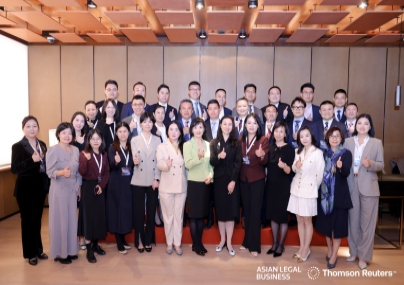It may be the Chinese government's idea of creative destruction.
Beijing appears to be on the brink of forcing the most modern and competitive Chinese steelmaker, which is itself struggling amid a global steel glut, to rescue a loss making and heavily indebted rival in what some securities and credit analysts see as potentially a marriage made in hell.
Listed units of Baosteel Group, the second-largest Chinese steelmaker, and Wuhan Iron and Steel Group, the sixth largest, said in separate stock exchange announcements on June 26 that they are planning on restructuring together.
While the two state-owned enterprises (SOEs) didn't provide any details on what that entailed, industry experts say one possibility is that Baosteel may have been ordered by Beijing to take over all or a majority of Wuhan Steel amid a broader push to reduce the number of state-owned enterprises.
The way in which the restructuring is done will be a major indication of how the government plans to transform other smoke-stack sectors of the economy where SOEs dominate. Investors will in particular be watching whether Baosteel is allowed to shutter much of the high-cost production at Wuhan Steel or whether profits have to be sacrificed to jobs retention as the government seeks to avoid any threat to social stability.
Spokespersons for Baosteel and Wuhan Steel declined to comment, but sources familiar with both firms said the two companies will be discussing various options from a full merger to a cross-holding of ownership over the coming months.
China's State-owned Assets Supervision and Administration Commission, which directly owns both companies and the Ansteel Group, did not respond to a faxed query for comment.
COOL RECEPTION
The prospects for a deal are not being greeted with enthusiasm inside either firm, said sources familiar with the thinking at the two companies. Baosteel is reluctant to take on an additional burden at a time when it is struggling to ensure its own profitability, while Wuhan Steel is not keen to lose control of its own destiny.
"There is no market incentive for the two companies to do restructuring,” said a Baosteel official, who declined to be named.
Ratings agency Moody's said any merger would be "credit negative for Baosteel because it would increase Baosteel's leverage" and says it could downgrade the company's ratings. Hurt by a drop of more than 60 percent in benchmark Chinese steel prices since 2012 amid shrinking demand and massive overcapacity in the domestic industry, Baosteel has been trying to streamline.
It shut 3 million tonnes of capacity in Xinjiang in the far west of the country last summer, and plans to close another 9.2 mln tonnes of capacity between 2016-18. In 2015, it produced 36.1 million tonnes of crude steel.
Wuhan Steel, which produced 26.8 million tonnes last year and owns a series of 40-50 year-old mills, has also been trying to cut costs after the government made a former Baosteel executive Ma Guoqiang its general manager in July 2013 and promoted him to chairman last year. Ma told local media in March that the company planned to cut its 80,000-strong workforce in half.
Wuhan Iron & Steel, its mainly listed unit, reported a 7.5 billion yuan ($1.12 billion) loss in 2015, and its gross profit margin slumped to minus 4.5 percent, the first time it has been negative since the company's listing in 1999. Its debt-to-asset ratio jumped to almost 70 percent in 2015 from 62 percent a year earlier.
CREATING GIANTS
Securities analysts and industrial officials said that state-owned steel firms should let the market decide their fate, and they should go bankrupt if necessary rather than be rescued through Beijing-arranged mergers. "Baosteel is having a difficult time too, given the industry downturn, and the government-led restructuring will put more burden on the company," said Hu Yanping, an analyst with industry website Custeel.com.
Hu said that Baosteel had more modern equipment, management thinking, and a long-term strategy, while the other state-owned mills “are not thinking that far."
Nonetheless, the government appears intent on consolidating output among the most modern producers and shuttering inefficient plants, and has decreed that 60 percent of national output should come from the top 10 steel makers by 2025, compared with less than 40 percent currently.
"The government's policy has always been creating giant groups and increasing the level of concentration, but this will only work by letting the market shut down outdated ones and letting the surviving ones expand and have higher market share," said Jiang Feitao, a steel researcher with the China Academy of Social Sciences, a state think-tank.
Baosteel Group, founded in 1978 when China's economy first opened up after the Mao era, has 130,000 staff, some new plants, and a highly regarded research institute.
Baoshan Iron & Steel, its main publicly traded unit, reported an 82.5 percent slump in 2015 net profit to 1.01 billion yuan, and its gross profit margin dropped to a three-year low of 8.95 percent. Its recent takeover history is less than stellar. The Xinjiang Ba Yi Iron & Steel Co, taken over by Baosteel in 2006 for 3 billion yuan, suffered a loss of 2.5 billion yuan last year. SGIS Songshan Co, acquired in 2011, lost 2.6 billion yuan in 2015.
The Chinese steel industry's recent history is littered with mergers that have failed to deliver any substantial cost cuts or efficiency gains. Industry experts say little suggests that a combination of Baosteel and Wuhan Steel will buck this trend.


